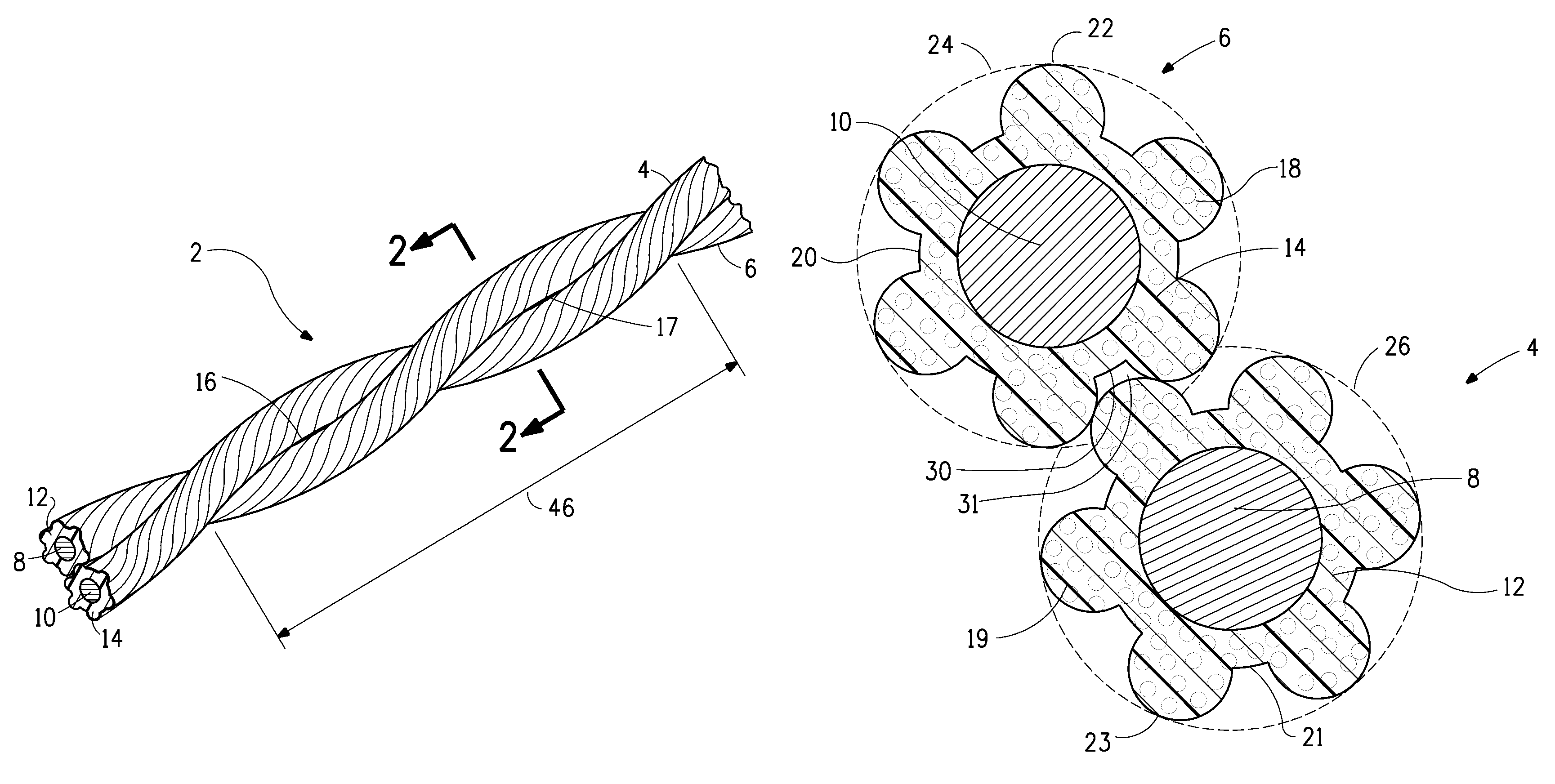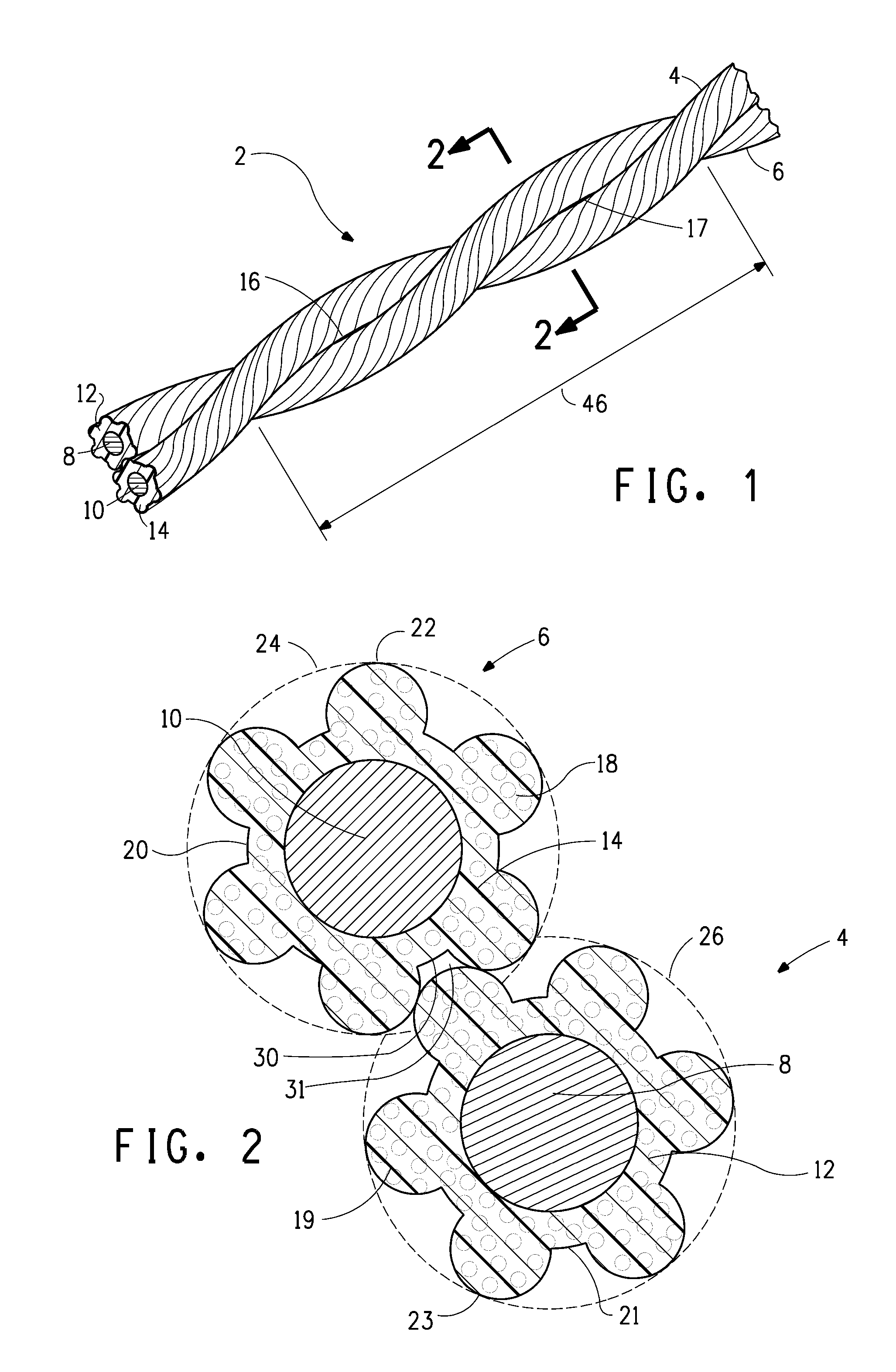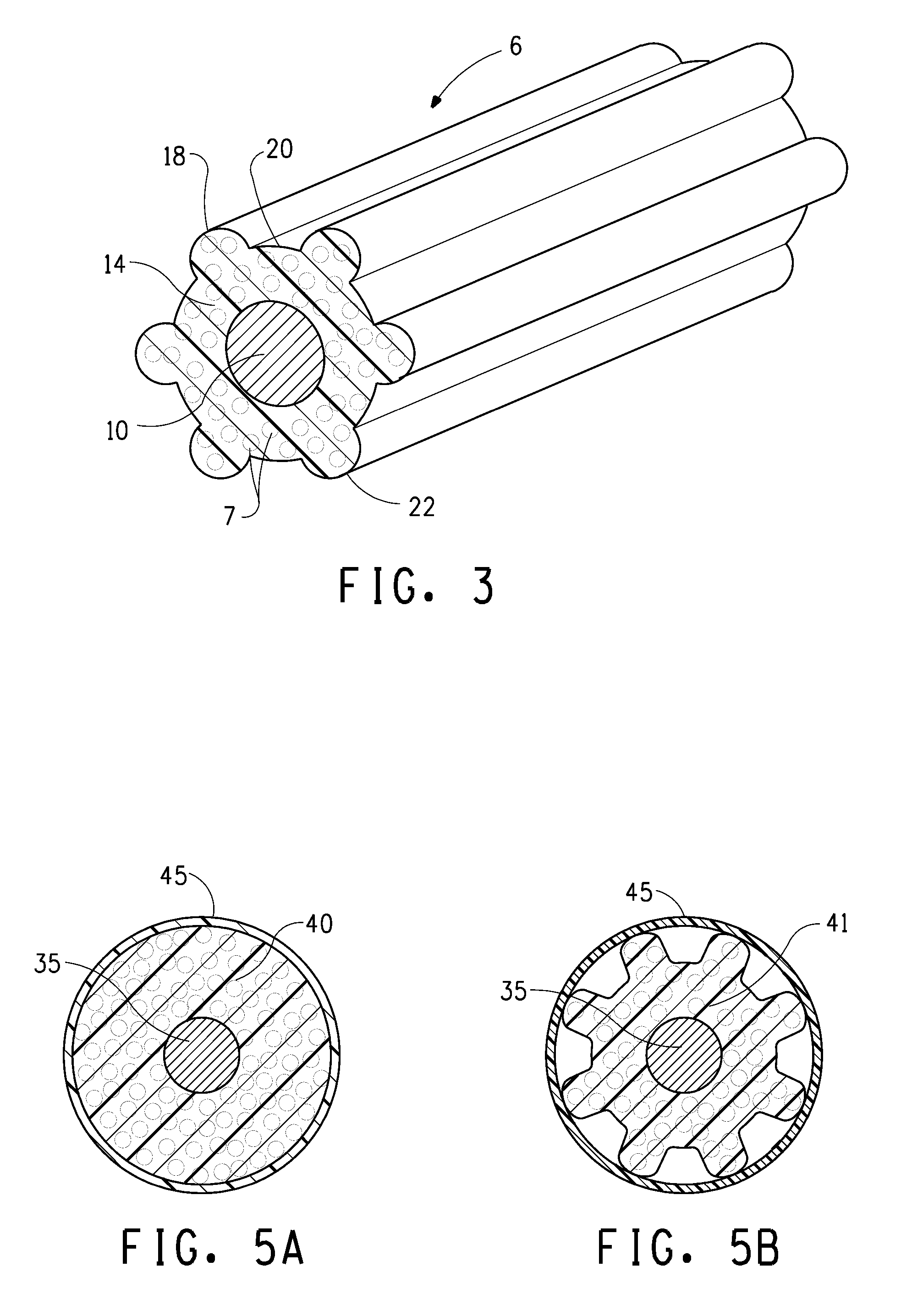Crush resistant conductor insulation
a conductor and resistance technology, applied in the direction of insulated conductors, cables, conductors, etc., can solve the problems of increasing cable weight and cable size, and achieve the effect of increasing impedance, increasing impedance per lb/1000, and increasing impedan
- Summary
- Abstract
- Description
- Claims
- Application Information
AI Technical Summary
Benefits of technology
Problems solved by technology
Method used
Image
Examples
example 1
[0050]In an embodiment of the present invention, the profile of a scalloped insulation surface is used for a foamed insulation coaxial cable as shown in FIG. 5B. In Table 1 below, the properties of a typical or conventional foamed coaxial cable (FIG. 5A) are compared to the scalloped foamed insulation coaxial cable (FIG. 5B) of the present invention. As indicated in Table 1 the significant difference is the insulation weight. Capacitance, VP (velocity of propagation) and calculated impedance are virtually the same. The weight of the conventional foamed insulation is about 0.918 lb / 1000 ft versus the reduced weight of 0.721 lb / 1000 ft. This weight reduction in material while maintaining the electrical and mechanical properties of the coaxial cable provides a significant cost savings to the manufacturer.
[0051]Table 1 shows the electrical properties of the conventional foamed coaxial cable (FIG. 5A) in comparison to the present invention of the scalloped foamed coaxial cable (FIG. 5B)....
example 2
[0058]This Example compares the impedance for twisted pairs of insulated wires when (i) the insulation for the twisted pair is a profile insulation of the present invention (Invention in Table 2) and (ii) the insulation for the twisted pairs is non-profile insulation, i.e. resembling a cylinder around the wire (Conventional in Table 2), wherein the weight of the insulation for all of the twisted pairs is kept constant at 0.832 lb / 1000 ft. The impedance results are shown in Table 2 for various twinning rates (twists / min) and lays. The lay for the twisted pair is defined as the inches per complete twist, such as is shown by the bracket 46 in FIG. 1 The conventional insulation has a thickness of 9 mils. The Invention insulation has the cross-sectional configuration shown in FIG. 8. Details of this configuration are given in Example 4. The nesting of the insulated conductors forming the twisted pair of the Invention in Table 2 is obtained by backtwisting 30% each insulated conductor in ...
example 3
[0061]The present invention also shows a reduction in polymer insulation required for foam designs when compared to the standard polymer insulation under similar conditions. The foamed polymer insulation of this Example resembles that of FIG. 2, wherein the 6 peaks are each 4 mils (0.1 mm) wide and 4 mils (0.1 mm) high and the overall insulation thickness is 11 mils (0.28 mm). The thickness of the insulation at the inner circumference defined by he valleys is 8 mils (0.2 mm). The diameter of the insulation from peak top to peak top is about 45 mils (1.143 mm). The peaks occupy about 41 % of the inner circumference of the polymer insulation defined by the valleys.
[0062]When this polymer-insulated conductor is twinned with another of the same polymer-insulated conductors at a twinning rate of 2000 turns / min to form a lay of 0.3 in (7.6 mm) for the twisted pair, a peak of one insulation nests in a valley of the other insulation assisted by the back-twisting of the individual polymer-in...
PUM
| Property | Measurement | Unit |
|---|---|---|
| thickness | aaaaa | aaaaa |
| thickness | aaaaa | aaaaa |
| impedance | aaaaa | aaaaa |
Abstract
Description
Claims
Application Information
 Login to View More
Login to View More - R&D
- Intellectual Property
- Life Sciences
- Materials
- Tech Scout
- Unparalleled Data Quality
- Higher Quality Content
- 60% Fewer Hallucinations
Browse by: Latest US Patents, China's latest patents, Technical Efficacy Thesaurus, Application Domain, Technology Topic, Popular Technical Reports.
© 2025 PatSnap. All rights reserved.Legal|Privacy policy|Modern Slavery Act Transparency Statement|Sitemap|About US| Contact US: help@patsnap.com



